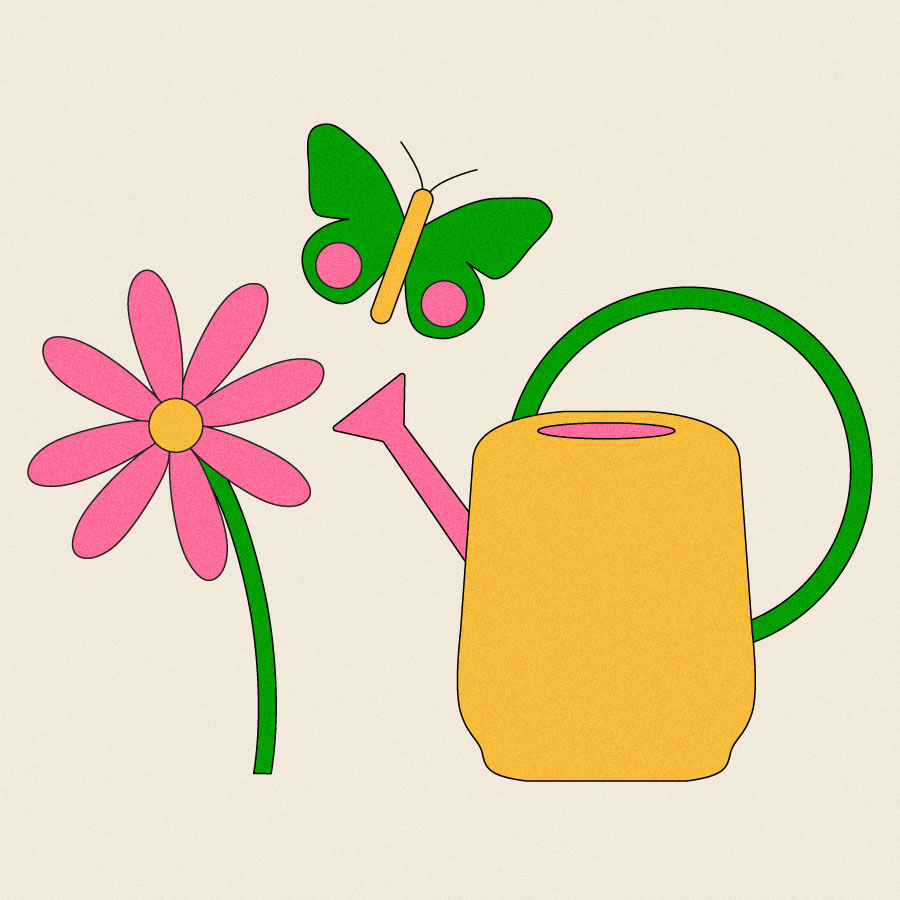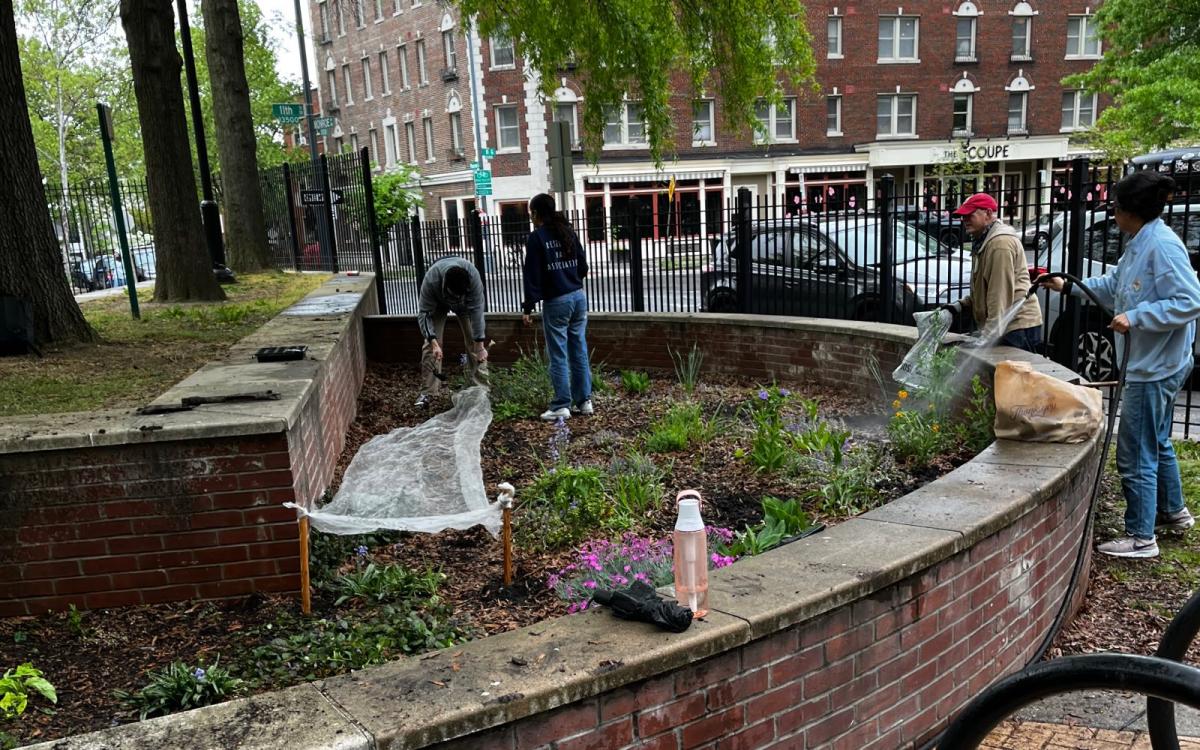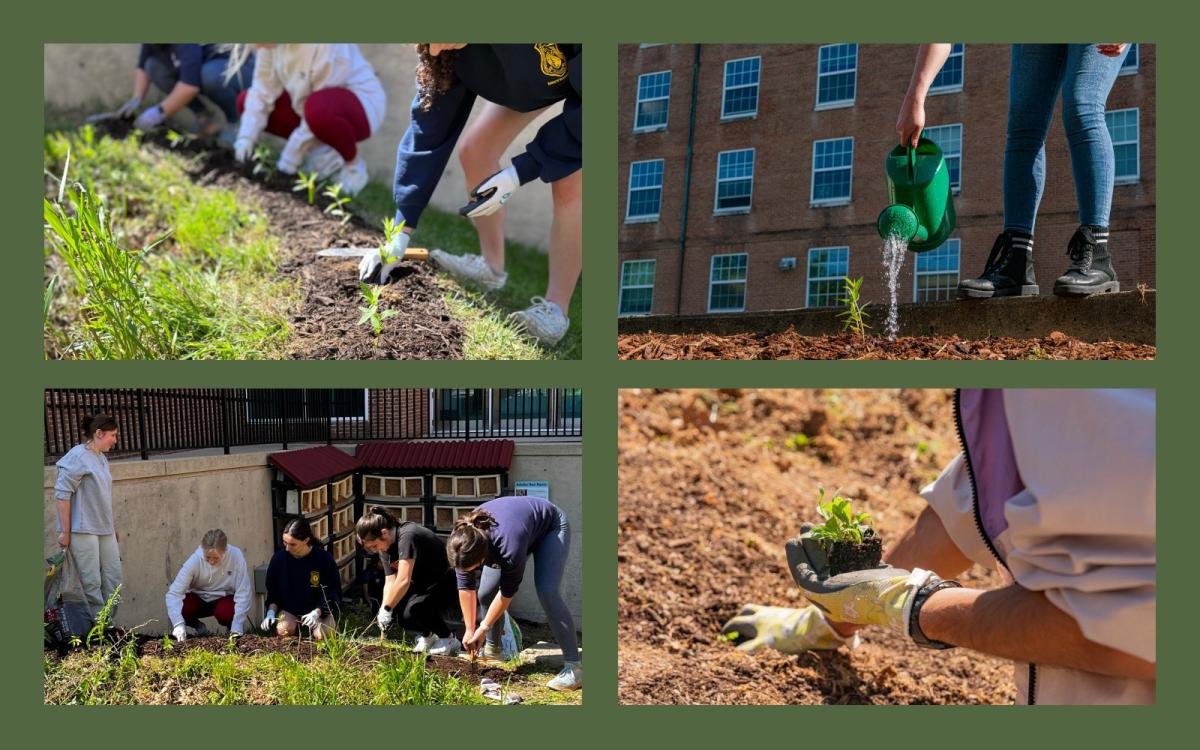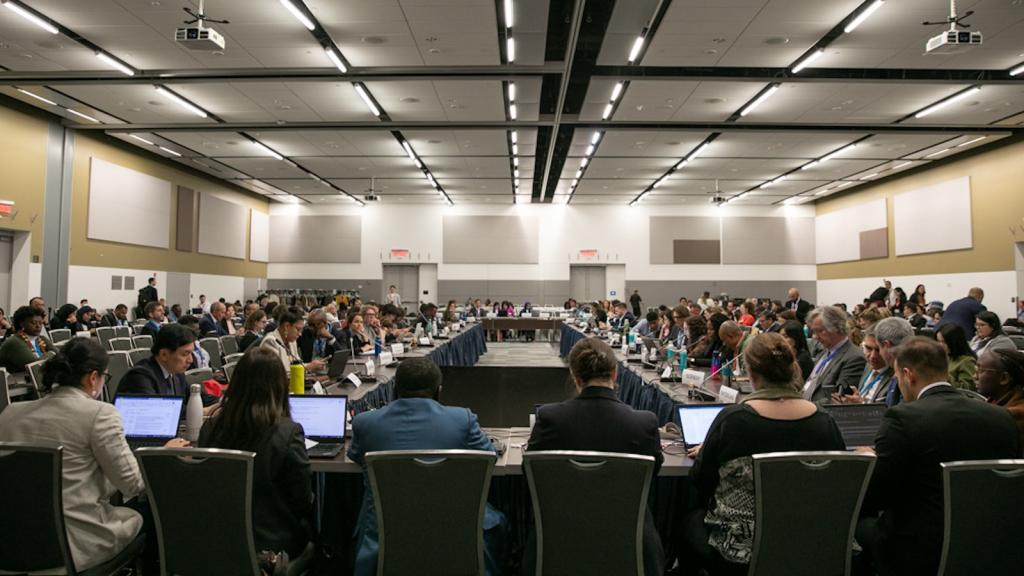
The spotlight
Tending a garden is about as hands-on as climate solutions get. On a basic level, putting plants in the ground helps sequester carbon. Vegetation can reduce stress and tension for the humans around it, and it provides habitat and sustenance for pollinators and other wildlife. Gardens can provide spaces for education, and, of course, sources of food. But the act of designing and planting a green space serves another, more metaphorical purpose: It gives the gardener agency over a piece of the world and what they want it to look like — and a role in conveying of all those aforementioned benefits.
That’s the premise behind Wild Visions, a challenge launched in the DMV area (that’s District of Columbia, Maryland, and Virginia, for the uninitiated) in January. The project invited university students to design gardens with all sorts of visions and themes, then bring them to fruition this spring with native seedlings from Garden for Wildlife — an offshoot of the National Wildlife Federation.
For every plant the company sells, it donates one to a community project, said campus engagement lead Rosalie Bull. This spring, around 2,000 went to Wild Visions.
“We’ll be creating in total nearly 6,000 square feet of new wildlife habitat in the DMV,” Bull said. “And that’s just this year. We hope to do it year after year.”
In Bull’s view, this project has a distinctly solarpunk framing — celebrating a literary genre and art movement that conjures visions of a sustainable future, where nature is as central as technology. Although part of the goal was to get more native flowers in the ground, the challenge also hoped to “activate the solarpunk imagination,” and let students offer their perspectives on what the gardens could accomplish. For instance, a group called Latinos en Acción from American University wanted to focus on monarch butterfly habitat, as a symbol of the migrant justice movement. Others, like the Community Learning Garden at the University of Maryland, were interested in exploring culinary uses of the plants they received, which included sunflowers, black-eyed Susans, milkweed, goldenrod, and aster.
“We framed the challenge as a response to the biodiversity crisis, but also as an invitation to be creative and to create habitat and to create space for humans to connect with the more-than-human world,” Bull said. Above all, she and her team wanted the projects to be fun — and to help students feel empowered to participate in solutions. “The solarpunk orientation is recognizing that things are bad. There’s so much cause for grief, despair, anxiety, whatever. But nevertheless, we’re actually just being asked to care more for our communities and to reintegrate ourselves into relationship with the Earth and our local ecosystems.”

A photo from Latinos en Acción’s planting day at 11th and Monroe Street Park in D.C. Rosalie Bull
Garden for Wildlife hired Bull in September to explore how it might create opportunities for college students in and around D.C. (the company is headquartered in Gaithersburg, Maryland). She visited schools to discuss various possibilities, like fundraising partnerships or educational programs. “Almost every single student group that I spoke to was like, ‘Give us plants, and we’ll plant a garden,’” she recalled.
In the end, 14 groups participated from concept to planting day. They each received 150 seedlings for their wild visions, as well as design support and, in some cases, connections to local partner organizations. The challenge culminated on Sunday in an awards ceremony dubbed “The Plantys.” Among the six awards handed out were the cross-pollinator award, for the group that best exemplified collaboration; the wildlife-gardener award, for the design most focused on creating habitat; and the sanctuary-maker award, for the garden that best served as a community space for gathering and reflection. Each prize came with an engraved, handmade ceramic birdbath.
The landscape design award went to Students for Indigenous and Native American Rights, or SINAR, from George Washington University. Its garden took the shape of a turtle, modeled after the flag of the Piscataway people.
“I think that we saw this as an opportunity to raise awareness of the connection between climate change, Indigenous land stewardship, and even landback — and also to bring awareness to the Piscataway, [whose land] we reside on,” said Julia Swanson, a junior at George Washington and vice president of SINAR. She and her peers see a general lack of awareness of Indigenous history and the continued presence of Native peoples in the DMV area. “We just really want to rewrite that narrative and make sure everyone is aware that no matter where they go, they’re on someone’s land. And that includes D.C.”
Jacob Brittingham, the secretary of SINAR, is a member of the Choctaw Nation of Oklahoma. He saw this project as an opportunity to engage with Indigenous representation in his new home of D.C. “It’s always great when you get to honor tribal lands and tribal leaders, and the history and culture of people who have fought to be here, but are continuing to be marginalized,” he said.
The SINAR team planted its garden at Piscataway Park, working with the Accokeek Foundation, a local organization that tends to the park and manages educational opportunities there. During their planting day on Saturday, the students had the opportunity to learn from Anjela Barnes, a Piscataway leader and land steward who is the foundation’s executive director.
Working with Barnes was a highlight for all the members of SINAR. “I felt so lucky to be able to be there and to plant these plants, and be able to ask questions about them and talk directly to Anjela as we were going through,” said Riya Sharma, a senior and president of the group. “It was just such a great relief to go to Piscataway Park and be surrounded by nature — let alone actually using our hands to dig in the soil and work directly with the land.”
Swanson added that it felt good to actively do something the group advocates for on a theoretical level — the restoration of native plants and control of invasive species. And the planting itself was joyful. “I’m not exactly a super outdoorsy person,” she said with a chuckle. “But they were so helpful, the people from Accokeek Foundation. And it was just a really fun environment. Everyone was making jokes and collaborating.”
The group named its garden “Wawpaney,” which means daybreak or dawn in Nanticoke, a language spoken by the Piscataway and other tribes from the area. The students worked in a plot in front of the park’s educational center, near the parking lot, which will make the garden highly visible to visitors. Ultimately, they’d like to add a plaque sharing the story of the garden and its connection to the Piscataway flag. “That could be a follow-up project,” Brittingham said.

Sharma, Brittingham, and Swanson pose with their birdbath at the Planty awards ceremony. Aliia Wilder
As the challenge grows in the years ahead, Bull said, she’d like to be able to work with other organizations to offer students the opportunity to incorporate art and other interpretive materials into their gardens. She was heartened by the enthusiastic response not only from student groups, but also from local environmental organizations, like Accokeek Foundation, that wanted to get involved and host gardens.
“There are so many components of the planetary crisis that are really abstract, or are difficult to see yourself as actually integral to the solution,” Bull said. “But biodiversity renewal really has to play out at a yard-by-yard level. It has to play out by individual actions.” She echoed Swanson’s sentiments about creating the opportunity to put solutions into practice — in planting gardens, the students can see the impact they can have on people and wildlife in their communities. “They’re not like, ‘Oh, I just learned a horrific fact, that the world is emptying out of life and I have nothing to do about it.’ It’s like, ‘I’m actually already doing something about it.’”
— Claire Elise Thompson
More exposure
- Read: a previous Looking Forward newsletter about the movement away from manicured lawns
- Read: about the history of urban farming and its connections to food justice and resistance (Grist and Earth in Color)
- Watch / Read: about some of the benefits of planting native species in your garden (The Weather Network)
- Read: how climate change is affecting the health of native trees, and how arborists are working to build diversity and resilience in the urban canopy (Grist)
- Browse: a step-by-step guide to building a pollinator-friendly garden (U.S. Fish & Wildlife Service)
A parting shot
The Wild Visions cross-pollinator award went to three student orgs from the University of Maryland that teamed up for their planting day: the campus Community Learning Garden, the student chapter of the Audubon Society, and an environmental justice group called 17 for Peace and Justice. “It was honestly so awesome,” said Grace Walsh-Little, a senior and president of the Community Learning Garden. “We had worked really hard to be able to come up with a design plan for every single space in the garden and exactly what we were going to pick, and how we were going to space them and where certain plants were going to go. So it was really nice to see that come into action.” Here are some shots from their planting event on Earth Day.



